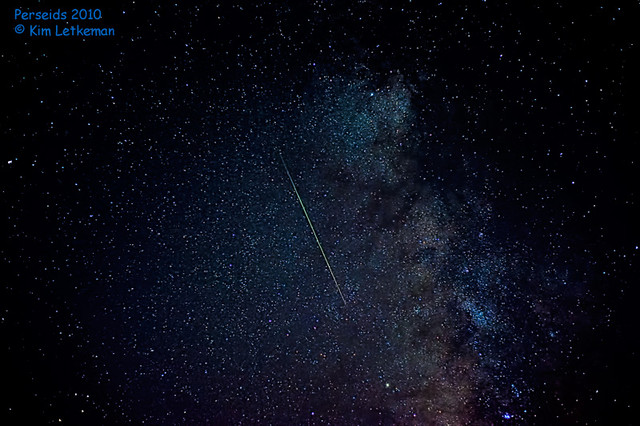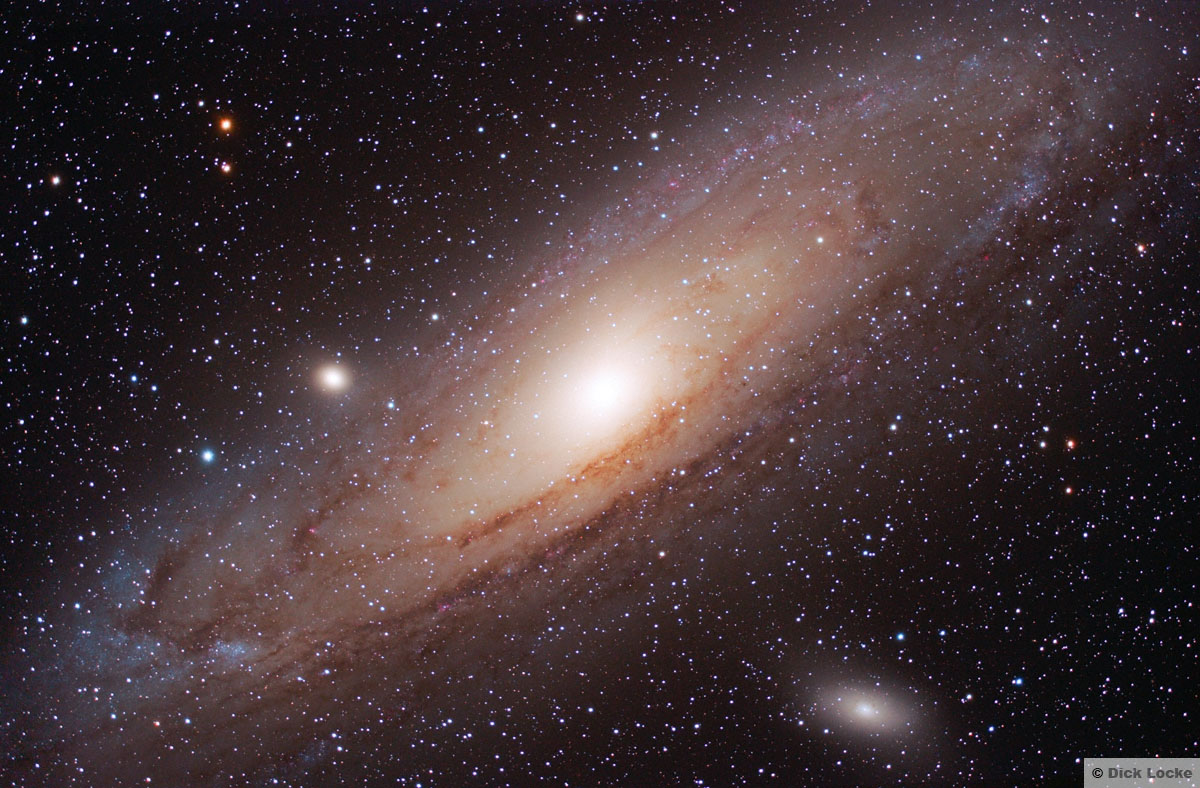Yes, that’s the title of a brilliant album by the Canadian band Wintersleep. But it is also a concept that I hope will play out over the next decade or so …
Being a science nerd (music, math and science awards during high school and computer science as my vocation) has its drawbacks :-) … I’m a self-admitted dilettante when it comes to trying new things. I rarely become a master at anything, but I do like to play at everything.
And so it is with astronomy. I’ve always loved the sky, even though we city-bred so rarely see it any more. Back home I can remember looking North from my front yard and seeing the Aurora Borealis on many nights. I even photographed it a few times, although I don’t think any of those were something to write home about.
But the night sky was pretty accessible back then, much less so now. We should all be supporting the efforts of the International Dark Sky Association to give up back our night skies. World-wide, billions of dollars are wasted each year in shooting light upwards and side-ways because of poor planning and execution of city lighting. Cancer rates and air pollution are higher because light pollution interferes with natural healing and cleaning processes.
Besides wasting money, the sky-glow caused by this problem suppresses more of the night sky each year.
I am actually a bit lucky in that I am far enough out of the city to at least have some slight visibility of the Milky Way from my back yard after sitting for half an hour and allowing my night vision to develop a bit. Many are not that lucky.
But I have never owned a telescope. And, since I allowed my photography interest to redevelop starting in 2005, I have realized that what really floats my boat is the idea of astrophotography. Though not necessarily the idea of freezing my butt off all night to make one excellent capture, hence the dilettante designation.
Anyway, I have read astronomy articles and magazines off and on for many years. In the last two years, I’ve been out photographing the Perseid meteor shower in early August and the results have been less than horrible. Well, in 2009 I caught nothing on film but saw 6 meteorites. In 2010, though, I saw a dozen or so and caught 6 on film.
This has sufficiently kindled my interest to make me decide this year that I would get a telescope. Of course, once you read all the “beginner telescope” articles, you realize that you need to spend some real money if you want a mount that is capable of giving you solid views with tracking and the kind of tracking that is useful for photography of deep-sky objects. Hint: you need an equatorial mount for exposures longer than 15 seconds and for stacking sub frames.
And of course I was making the presumption that I just wanted the scope to find the various interesting objects up there, Messier and otherwise. It seemed like a real chore to learn the nigh sky in such detail that I could find these things myself. So that meant a GoTo scope that still had the other properties I wanted and could see sufficiently well from my sky glow plagued site. Hmmm … that means a reflector of 8 inches to 10 inches on a strong GoTo equatorial mount. Well, that’s about 2 grand if done right. $1200 gets you a lesser unit that might suffice.
Ok … next plan.
The articles about beginning in astronomy all talk about your best first telescope being binoculars. They give sufficient magnification to see a lot of objects and they give a beautiful wide field view to allow you to properly scan the night sky and learn a thing or two about where things are.
After a lot of soul searching, I realized that good advice is consider good for a reason. Stubborn techies like me need to heed this advice and stop resisting it to save a buck.
Sidebar: I saved some bucks on my first serious tripod by buying a $200 Manfrotto setup and within two years I got sick of the compromises inherent in inexpensive tripods and heads and finally took Thom Hogan’s sage advice and bought a professional grade tripod and ball head. The Feisol 3471 and Markins M20L are so far beyond the typical cheap setup that the difference is indescribable. Sage advice should be weighed carefully before being ignored.
So I decided a few weeks ago to stop worrying the issue of the perfect first telescope and ordered a pair of binoculars. I checked out a lot of reviews and knew that I wanted astronomical binoculars, i.e. binoculars with large objectives and high quality BAK-4 prisms. I also opted for waterproof binoculars because I have issues with waiting for camera lenses and glasses to clear once they are fogged. It’s annoying. The Nitrogen-charged and sealed waterproof glasses have gotten very good reviews on that score.
Finally, after looking around quite a bit, I had narrowed things down to a few brands. The SkyWatcher binoculars seemed pretty tempting. The 15x70 pair are very inexpensive for the quality, but they are not hand holdable at all. Too much magnification. Plus, they are not waterproof. The Nikon 10x50 Action Extreme have everything I want, but then the Oberwerk 10x60 Marine also have everything and larger objectives. So the Oberwerk it was, at $169usd. Not cheap, but cheaper than a good telescope would have been.
The specs on these are impressive. Fully broadband multi-coated (all surfaces), 5.3 degree field of view, 6mm exit pupil, 23mm eye relief (good for glasses wearers) with the only downers being 15m minimum focus distance and 3.2 pounds. Some binoculars offer minimum focus at less than 20 feet, and make superb birding glasses. Not these.
They arrived in a week and a half or so and have been more than a little amusing. It takes some time to get them perfectly setup for your inter-pupillary distance, and focusing can be a chore as you perform a center focus to get the left eye accurate and then tweak the right eye with the individual focus. That way, you can focus from then on with the center focus only.
So I went outside a few nights ago, the first clear(ish) evening since I got them, and spent some time looking around the sky. Considering that my yard has quite a bit of sky glow, I was very impressed by what was visible. Looking up into the Milky-Way brings breathtaking vistas of stars bright and dim. It’s really shocking how much more light a pair of 60mm objectives can gather than your own eyes.
That evening, I looked around the virtual sky in Stellarium and found that Scorpius was in a very convenient location for observing in the southern sky. Further, it was extremely easy to spot in the sky once I allowed my eyes to adjust, which takes 20 to 30 minutes for adaptation to the point where the Milky Way becomes somewhat visible above.
I poked around in Stellarium to find suitably bright star clusters and in fact M6 (The Butterfly Cluster) and M7 looked quite promising, at magnitudes 4.2 and 3.3 respectively. So I spent some time navigating around Scorpius and down the tail, most of which was obscured by the trees and houses south of my yard. But epsilon Sco – the start of the tail – was visible and I was able to follow that to the left and slightly up, where M7 came perfectly clearly into view. That was pretty cool. I then scanned up and right at 45 degrees and there was M6. Wow … that was quite easy.
While I was just scanning around the sky, I managed to see 4 satellites that were either invisible or barely visible with the naked eye. Very cool. I had never really thought about how bright they would be, but of course they reflect sunlight just like the moon. While I was following the fourth satellite, a meteorite went screaming through the field of view of the binoculars, in what must be a truly rare occurrence. I was amazed!
Later, the moon was high in the sky with Jupiter, wiping out a lot of the stars with its brightness. Of course, the moon makes a fantastic target for binoculars as it is bright and very contrasty. I was not disappointed. Craters plainly visible all over the terminator, it looked magnificent. Jupiter’s moons were plainly visible as well, although I will need to get a tripod mount for the binoculars in order to count them. The view is just too shaky hand held for that,
The next night, I was out poking about the sky again and managed to see another satellite. But the real highlight was exploring the sky to the right of Cassiopeia and finding M31, the Andromeda Galaxy! Wow, that sucker is huge! It is about the same width in the sky as the moon itself. It looks like the shape of an eye with a bright glow in the center. Anyone who has seen images of M31 knows that it is a stunning sight when photographed, as shown here in an image by Dick Locke (click through to see his excellent work on this galaxy):
That’s M32 at the bottom right of M31. Although the view in my binoculars is nothing like this, I still see the main elements and that blows my mind.
Anyway … ‘nuff said. These things are fun …



No comments:
Post a Comment